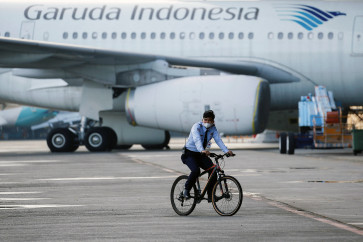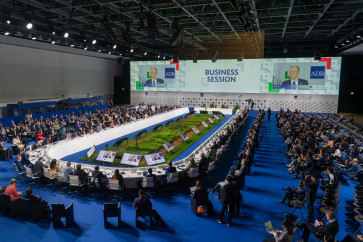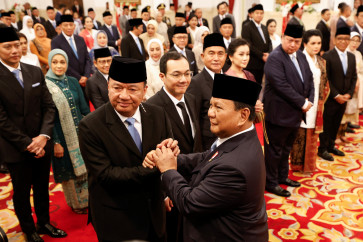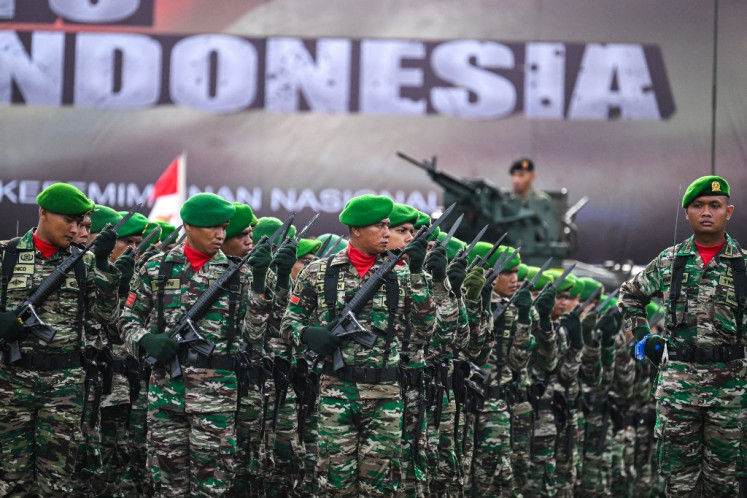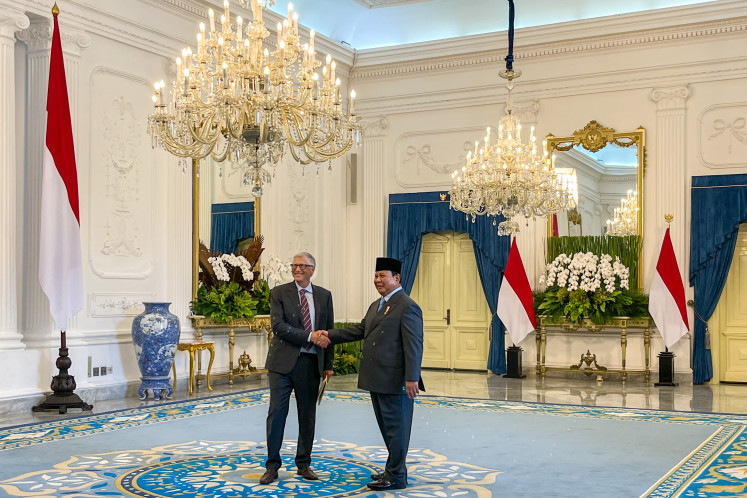Nusantara’s cultural symbols here to stay in woven fabrics
Timeless works: Two women look at woven fabrics from various regions in Indonesia during the Nusantara Woven Fabric Festival, which lasts from Oct
Change text size
Gift Premium Articles
to Anyone

T
imeless works: Two women look at woven fabrics from various regions in Indonesia during the Nusantara Woven Fabric Festival, which lasts from Oct. 13 to 17 in North Tapanuli, North Sumatra.(JP/Apriadi Gunawan)
Cultural symbols will remain popular as motifs for the woven fabrics of the Indonesian archipelago, popularly called Nusantara, experts have said.
According to a researcher of Nusantara woven fabrics, Mitu M. Prie, the world was astonished by the Nusantara woven fabrics because ethnic communities in the country kept translating centuries-old cultural symbols into motifs of their handmade fabric.
“This [usage of cultural symbols] is natural because woven fabrics are the oldest part of Nusantara civilization,” Mitu said during a national festival on Nusantara woven fabrics.
The symposium, titled Ahu Partonun (I’m a Weaver), was held in Tarutung, Muara, Sibandang Island, North Tapanuli, from Oct. 13 to 17, featuring various activities such as a display of Nusantara woven fabrics, a symposium, a weavers’ camp, traditional children’s toys and art performances.
The event ended with a fashion show featuring the works of Edward Hutabarat from North Tapanuli, who introduced the rich motifs of ulos by adopting the theme Ulos Batak in Innovation.
Mitu explained during the symposium, which was attended by around 200 weavers from across Indonesia, that the history of the Nusantara woven fabrics was rooted in the megalithic era, which is depicted in the symbols of sarcophagi and menhirs as motifs.
He mentioned the Nusantara cultural axis of megalithic civilization comprises the Batak and Nias civilizations in Sumatra, the Baduy in Java, the Dayak in Kalimantan, the Toraja in Sulawesi, the Bali Aga in Bali and the Sumba in East Nusa Tenggara.
All six civilizations in different regions share similar cultural values, including a traditional house that is divided into three sections: the upper part for worshipping the Creator, the middle part for humans to live in and the lower part for cattle.
“Ornaments of the traditional house are cultural symbols that can be found in Nusantara woven fabric motifs,” Mitu said.
Meanwhile, chairman of the National Handicraft Council of North Tapanuli, Satika Simamora, said cultural symbols as an integral part of the Nusantara woven fabrics would be hard to remove.
Satika stressed that craftspeople should not worry about using centuries-old cultural symbols as their fabric would remain marketable and popular in the future.
“Nusantara woven fabrics with cultural motifs have always been the trend and they also appeal to overseas buyers,” Satika told The Jakarta Post.
Satika revealed that foreign demand for woven fabrics with cultural motifs produced by the Toba community had been increasing over the last few years, with at least around 3,000 Toba woven pieces being sold daily to Australia, South Korea, France and the Netherlands.
“Today offers an opportunity for the Nusantara woven fabric industry to boost its production without abandoning regional cultural characteristics,” added Satika, while quoting prices of North Tapanuli woven products between Rp 500,000 (US$33) and Rp 15 million per piece.
Separately, North Tapanuli Regent Nikson Nababan described every motif on a woven piece as bearing the philosophy of life of a region.
Nikson hoped that regional weavers could produce fabric with different cultural motifs suited to the needs of present-day garments without spoiling cultural values.
“In this way the world will be acquainted with our Nusantara cultures and make use of the woven fabric,” Nikson said.

